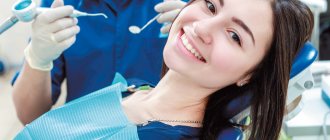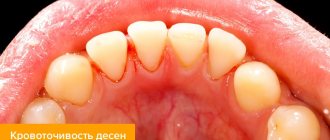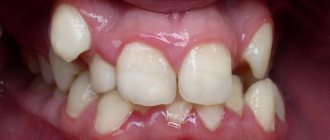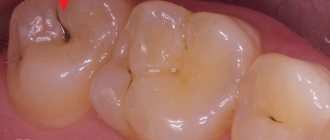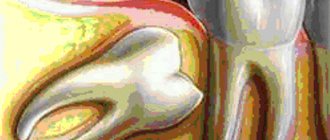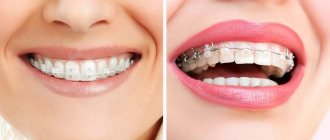Classic tooth extraction in dentistry is considered one of the most unpleasant and painful procedures. Fortunately, dentistry does not stand still, and today even such an unpleasant procedure can become completely painless. Specialists at the Smile Line dental clinic have long abandoned the use of traditional forceps and use the Piezotome2 piezosurgical device to remove teeth without pain, which affects hard tissues with ultrasonic vibrations, which prevents injury to blood vessels, soft tissues and nerves.
Why we use PiezoSurgery®
We eliminate any risks when removing teeth, because... surgical treatment in our Center is carried out in the LifeTime Warranty format, a lifetime guarantee
| Classic method | Ultrasound removal |
| Burn When segmenting a tooth with a drill, friction is created, the tooth tissue heats up and provokes a burn of the mucous and bone tissue | Burn Ultrasound does not heat the surface, the cut is formed without the instrument touching the tooth |
| Soft tissues The more difficult the removal, the more difficult it is not to injure the mucous membrane around the tooth with an elevator, forceps, drill, saw or chisel | Soft tissues The piezo scalpel does not affect soft tissues, which greatly reduces pain during and after surgery, as well as bleeding |
| Bone tissue Preserving bone for subsequent implantation is quite difficult; the volume of bone material for subsequent regeneration will require a significant amount | Bone tissue The bone remains unharmed - immediate implantation is possible on the day of removal or delayed with minimal replanting of bone material |
| Safety Wound surface increases the risk of secondary infection | Safety The invasiveness of the mucous membrane is reduced to zero, plus ultrasound has a disinfecting effect |
| After surgery Injury to soft tissues, especially with multiple removals, provokes pain in the postoperative period | After surgery Ultrasonic removal is a minimally invasive operation, pain is either completely excluded or insignificant |
| Cost Low cost for classic removal in a clinic “around the corner” does not guarantee safety and comfort | The cost of Piezosurgery in a decent clinic is not assessed separately, because... is an integral part of safe treatment |
What are the main advantages of the piezosurgical device?
- The speed of the operation is 15–20% faster than the traditional method. This is convenient especially if it is necessary to remove several teeth at once;
- It is not only simple, but also not painful to remove a tooth. This method can become an alternative to dental treatment under anesthesia, limiting oneself to local anesthetic during even the most complex operations;
- Allows removal of dystopic, impacted teeth;
- There is practically no blood during the operation, which can be explained by the rapidity of the intervention;
- Avoid heating and causing burns to soft tissues. Please note: heating is especially dangerous for the pulp - it can become inflamed.
- This technology allows operations to be performed even on patients who suffer from vascular diseases;
- This is the only option for tooth extraction for a patient with poor blood clotting;
- Antiseptic effect of ultrasound, which is good when performing operations on people allergic to antiseptic drugs;
- The risk of postoperative complications is extremely low;
- Non-contact influence of the device.
If we talk about the disadvantages of this removal method, then there is probably only one – cost. The price of ultrasonic tooth extraction is several times higher than conventional methods, although it cannot be called inaccessible. And the antiseptic effect of the ultrasonic pointer eliminates the need to prescribe antibiotics. And now parents don’t have to lie that it doesn’t hurt at all to remove a tooth - with ultrasound this is true.
Ultrasound tooth extraction Advantages of performing surgery in your sleep
Sedation in dental surgery is the “gold standard” for surgical operations in dental clinics in Europe and the USA.
- Absolute comfort for the patient: no stress, pain, medical odors and unpleasant memories
- Combined anesthesia without injections into the gums
- For patients with heart disease, this is the only opportunity to receive dental care
More about sedation
The combination of sedation and piezosurgery ensures 100% safety and comfort when removing even the most complex teeth in unusual cases.
Removal technology
Stages of the procedure using the example of an incompletely erupted wisdom tooth:
- Diagnosis of contraindications.
- The patient is given local anesthesia.
- An ultrasonic “scalpel” is used to peel off the gum tissue to free the surgical field.
- The tooth is carefully defragmented using ultrasound (without pain, pressure or touching the equipment to the tissue).
- The tooth elements are easily removed from the socket along with the roots.
- The mucous membrane is returned to its place, and stitches are applied if necessary.
How does ultrasonic removal work “in your sleep”?
Ultrasound removal is performed using special piezosurgical devices. The main feature is that the device affects only hard tissues and turns off when it touches soft ones, such as gums, nerves and blood vessels.
Sequencing:
- A butterfly catheter is fixed on the patient’s wrist (we use the most delicate ones from a children’s set) and an infusion pump is connected for controlled administration of drugs.
- If necessary, the assistant administers local anesthesia to be 100% sure that the treatment is painless; by this time the patient no longer feels the injection.
- The doctor checks sensitivity to pain and the removal operation begins. While the surgeon works, the anesthesiologist monitors the patient's condition, checks breathing, pulse and measures blood pressure on cardiac monitors.
- An ECG is performed directly during the treatment process; control of the balance of oxygen and carbon dioxide is automated by our own oxygen generation station.
- The work ends, the anesthesiologist awakens the patient, and the assistant takes him to a control x-ray to check the correctness of the operation.
- 30-40 minutes after removal and the anesthesiologist checking the patient’s condition, you can go home.
Ultrasound tooth extraction is an ordinary routine event for our surgeons. At the Doctor Levin center, the most complex maxillofacial and ENT operations using piezosurgery are performed daily: sinus lifting, maxillotomy, multiple tooth extractions. For an average surgeon, the remaining teeth before implantation are a hindrance and do not stand on ceremony with them. The result is broken bone structures of the jaw, wandering remnants of roots, unremoved cysts growing into the maxillary sinus, perforations, fistulas, osteomyelitis and much more. Not to mention the shocking post-operative pain that overtakes the patient after such punitive surgery. Entrust removal to an oral and maxillofacial surgeon. Only the maxillofacial surgeon has enough theoretical and practical skills to perform tooth extraction without complications.
My life's goal is to create the best oral and maxillofacial clinic in the world.
High-quality surgical care without complications and with absolute comfort - in your sleep, without stress, pain and unpleasant memories
Levin Dmitry Valerievich Chief physician and founder of the Doctor Levin center
Indications and contraindications
Ultrasonic tooth extraction can be used in all cases where extraction is necessary. The location and type of tooth does not matter. At the same time, there are a number of indications when a doctor can strongly recommend the use of ultrasound to ensure a predictable result and minimize possible complications:
- the patient has a bleeding disorder;
- abnormal position of teeth;
- complex tooth extraction that is covered with soft tissue growths;
- after an unsuccessful classical removal procedure;
- wisdom tooth removal;
- removal of impacted and dystopic teeth (in particular, eights with pathology);
- tooth extraction and immediate implantation;
- tooth extraction during pregnancy;
- tooth extraction for children, especially those with severe dental phobia.
The procedure also has a number of contraindications, in the presence of which the use of ultrasound is not recommended or strictly prohibited:
- For patients with a pacemaker, ultrasound is completely contraindicated;
- milk and mixed dentition in children (not recommended);
- HIV, hepatitis, tuberculosis;
- bronchial asthma;
- disorders of the central nervous system, mental disorders;
- extensive demineralization of enamel.
Modern dentistry
Our clinic employs specialists who regularly study in Russia, Germany, Austria, Japan and Italy.
Advantages of ultrasound removal at the Uniklinik Center for Modern Medicine:
- performing a computed tomography scan to assess the anatomical complexity of the tooth;
- choosing the optimal treatment method;
- use of high-precision equipment;
- use of magnifying equipment in work: microscope, binoculars;
- painlessness of the procedure;
- control inspection.
Why are wisdom teeth removed?
The presence of a wisdom tooth in itself is not an indication for removal. In order to understand that a particular tooth needs to be removed, an examination is first carried out, a computed tomography scan of the jaws is done to accurately visualize the anatomical features, this is necessary in order to more accurately plan the operation and minimize complications.
There are a number of cases when surgery cannot be avoided:
- re-corrow;
- foliculitis;
- treatment with braces - in some cases, wisdom teeth interfere with the correction of dentition;
- incorrect position;
- caries and its complications.
What is tartar and what are the causes of its appearance?
Tartar is hardened plaque that forms on the visible part of the tooth (crown) and under the gum.
The reasons for its appearance are natural, but the consequences can cause pathologies in the oral cavity.
Initially, food particles stick to the enamel. Bacteria begin to actively multiply in them. A dental plaque is formed, which looks like a soft, light plaque. Plaque can be easily removed by regular tooth brushing. But if this does not happen, then food debris, dead cells of the mucous membrane, calcium and phosphorus salts from saliva are layered on the soft plaque. They crystallize and harden.
Mineralization occurs on average within 12 days. Soft plaque turns into hard plaque. Tartar has a rough surface, onto which more and more elements “cling.”
Attention: A bacterial film on teeth forms within 16 hours. Therefore, it is important to brush your teeth at least twice a day.
Photo of plaque, male jaw
Why hard deposits form
Plaque formation is inevitable, but there are a number of factors that accelerate the process:
- Irregular hygiene. Particularly active formation of plaque and stone occurs at night: salivation decreases, a person swallows less often, and does not move the tongue. This creates a favorable environment for bacterial growth.
- Poor hygiene. Brushing teeth with horizontal movements does not affect hard-to-reach areas. The interdental spaces should be cleaned by moving the brush vertically.
- Diet. A large amount of sweet and starchy foods leads to the sticking of carbohydrates to the enamel and the proliferation of pathogenic microflora. To reduce the rate of plaque formation, you should eat fresh, firm vegetables and fruits. Chewing the fibrous pulp for a long time partially helps remove plaque.
- Physiological features. Incorrect bite and crowded teeth make proper cleaning difficult.
- Metabolic disorders. The composition of saliva changes, its bactericidal properties decrease.
- Smoking. Cigarette tar settles on the teeth, causing the formation of films and plaques.
Dystopic tooth
Removing such teeth can be called a simpler case compared to others, but only if the tooth has one straight root. Then the removal can take place quite quickly. But such clinical cases are extremely rare. And, looking at the picture, we see hooks, not roots, which, with proper pressure, can simply break. There are usually 2 roots, and in this case we just need to separate one root from the other using the same tool - the “raising” tip. And carefully remove each of the roots separately. The beginning and completion of the removal of such teeth is the same as for all others.
Main stages of ultrasonic processing
The dentist conducts an examination, identifies places where tartar accumulates, the amount, and determines its density in order to choose the appropriate cleaning regimen. Sometimes teeth are treated with a special solution that reveals the boundaries of plaque. If the patient has sensitive teeth, gums or deep subgingival calculus, anesthesia (injection or application) is performed.
Stone removal is carried out in three stages:
Brushing teeth with a skyler
Skyler is a dental instrument that generates ultrasonic air vibrations. Water (an antiseptic solution) mixed with air is sprayed through a narrow nozzle. The liquid is intended to cool the tooth and wash away the separated plaque.
The ultrasonic wave forms cavities in mineralized deposits, the plaque cracks and peels off from the enamel. The fragments are removed with a saliva ejector.
First, the doctor cleans the crowns, then the subgingival area, guiding the scaler with parallel vertical movements.
Brushing teeth with a skyler
Polishing
Cleaned teeth have a rough surface. To slow down the adhesion of food and bacteria, polishing is used.
Main types:
- Mechanical with special paste and a round elastic brush. The interdental spaces are polished with thin strips or narrow spiral-shaped brushes.
- Hardware using the AirFlow method - using a powerful jet of water with an abrasive containing sodium bicarbonate.
Brushing your teeth with a special paste and a round brush
Fluoridation
Fluoridation helps strengthen enamel and reduce hyperesthesia (sensitivity) in the cervical area.
- The tooth surface is dried with a stream of warm air for better adhesion.
- Apply a composition containing fluoride ions (gel or varnish) and dry again.
- The teeth are treated with a swab soaked in copper hydroxide and calcium solution. The substances enter into a chemical reaction, and calcium fluoride crystals are formed in the dentinal tubules and other irregularities, which strengthen the tooth tissue and prevent infection.
Recommendations
After the procedure, the dentist gives recommendations. Immediately after removal, the patient is given cold to the cheek: this will prevent swelling. When the effect of anesthesia wears off, the patient may experience pain for some time - this is normal. In this case, you can take the painkiller that the doctor suggested.
For 3-5 days, it is recommended to eat food at a neutral temperature, without heat or spices. Usually on the third day the patient is invited for a follow-up examination.
Saliva makes wounds in the mouth heal much faster. Only the first day will be the least accepted. If you follow the dentist's recommendations, the postoperative period will pass quickly and calmly.
- Recommendations after surgery .pdf
- Postoperative recommendations .pdf
Advantages of visiting the Trilogy clinic
The reliable Trilogy clinic specializes in providing various services in the field of dentistry in Moscow. We employ leading orthopedic doctors, orthodontists, periodontists, therapists and surgeons who regularly improve their skills by participating in scientific exhibitions and conferences. Thanks to extensive experience and equipping the clinic with modern equipment, they are ready to cope with clinical cases of any severity.
Numerous positive reviews from patients confirm the high quality of the services provided. At the same time, prices for services are affordable (you can find out more about the price list on the website). To make an initial appointment with a medical and dental specialist, simply fill out a standard form on the website, indicating contact information - name and phone number.
Advantages of the method
- Complex removal without general anesthesia under local anesthesia.
- High-quality operation in hard-to-reach places.
- The non-contact method eliminates the risk of tissue overheating during exposure. The pulp will definitely not get burned, and the patient will not get inflammation of the pulp.
- The exact localization of the impact determines minimal injury. They destroy only hard tissues, but the mucous membrane and nerve endings are not affected.
- Fast healing.
The cost of extracting a dental element using a piezotome is 2 times higher than the traditional one. But treating the wound surface with ultrasound has a disinfecting effect, and the patient saves on taking antibiotics. Minimizing the risk of complications eliminates the cost of their elimination and long-term rehabilitation.
Pros and cons of ultrasonic tartar removal
Unlike other methods, ultrasonic cleaning has a number of advantages:
- Removes subgingival calculus that is difficult to reach with traditional instruments. To clean the root zone, the doctor pulls back the gums and works with the neck and root of the tooth.
- Cleans the interdental spaces even of very dense teeth, uneven, overlapping one another.
- The procedure does not last long - 40-60 minutes.
- Painless. The patient does not feel any impact.
- Non-contact influence. Only air and water come into contact with teeth. With the outdated mechanical method, the instruments scratch the enamel and cause an unpleasant “grinding” sensation.
Semi-retinated tooth
In principle, the method of removing such a tooth is no different from removing a completely impacted tooth. But, as a rule, it is a little easier, because the tooth is not so deep. The main stages are essentially the same: anesthesia, creating access to the tooth (and sometimes you can do without incisions), fragmentation (dividing the tooth into parts) and, in fact, removing the teeth in parts.
After removing the lower semi-impacted tooth, sutures are placed on the socket; in the area of the upper wisdom teeth, sutures are not necessary.
What is piezosurgery
The piezoelectric effect is the physical principle that causes quartz crystals to vibrate when an electrical current is applied. Thanks to special mechanisms for transmitting vibration generated by quartz and converted into oscillatory movements of the insert, which allows selective removal of tissue. This procedure has proven effective in various areas of surgery.
The main advantage of piezosurgery is that soft tissues that come into contact with the vibrating material are not damaged. This reduces the risk of injury to vital nerves or blood vessels.
An important property that further confirms the advantages of using piezoelectric equipment is the ability to deflect the vibration of the drug through the instrument. The achieved preparation of less hard and soft tissue allows for smaller approaches and reduces morbidity in patients undergoing apicoectomy.
